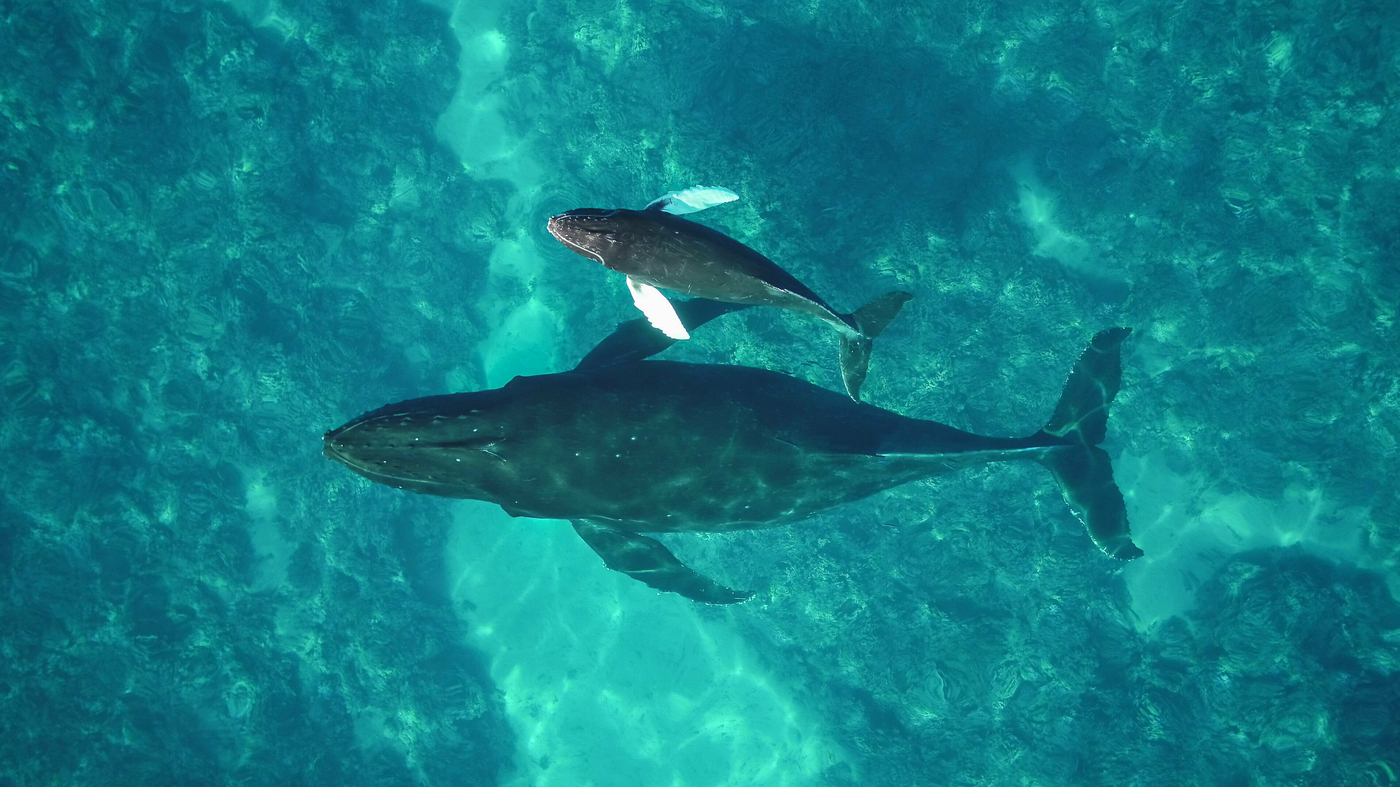Similar to this family and infant, humpback whales that spend their summers in Hawaii have seen a decline over the last decade. The University of Hawaii at Manoa’s Marine Mammal Research Program, led by Martin van Aswegen, has observed this trend. The population of humpback whales, renowned for their intricate songs, has faced challenges despite a notable recovery from the era of extensive whaling that nearly wiped them out. These majestic 50-foot creatures have reappeared in regions of the Pacific Ocean where they were once absent.
Recent findings indicate that their resurgence is being hampered by the effects of climate change. A study revealed that the North Pacific Ocean humpback whale population has diminished by 20% from 2012 to 2021, as determined through AI-assisted photo identification methods.
The decline coincided with a significant marine heatwave known as “the blob,” which caused a rise in water temperatures spanning from Alaska to California. This event had cascading effects on various marine life, impacting fish, birds, and whales throughout the food chain.
According to John Calambokidis, a whale researcher at Cascadia Research and a co-author of the study, the alarming aspect of the observed changes in sea conditions is the rapid rate at which they are occurring. This acceleration poses a heightened risk to long-lived, slow-reproducing species like humpback whales and other large cetaceans.
Visual Identification of Whale Tails
Ted Cheeseman, a veteran scientist with three decades of experience conducting expeditions in Antarctica, is a co-author of the recent study. His involvement dates back to the early 1990s when the search for humpback whales commenced.
During that period, sightings of humpbacks were scarce, but their numbers gradually increased over the years, with a noticeable surge in the 2010s. Following the cessation of commercial whaling practices that persisted until the 1960s for many whale species, the humpback populations began a slow but steady recovery. Cheeseman, through years of documenting whales on film, realized the value of the data he was collecting for scientific research.
Photographic identification plays a crucial role in monitoring humpback populations. As humpbacks dive, they lift their flukes out of the water, revealing unique patterns and colors on their tails that serve as individual identifiers. Scientists rely on these distinct markings for whale identification, a meticulous process that involves matching tail patterns in photographs.
 Humpback whale tails bear unique markings that facilitate identification by scientists and AI algorithms. Ted Cheeseman
Humpback whale tails bear unique markings that facilitate identification by scientists and AI algorithms. Ted Cheeseman
Cheeseman foresaw the potential for expediting this identification process through technological advancements. This vision led to the establishment of Happy Whale, an AI-powered service for humpback whale identification based on images. The initiative amassed around 200,000 images of humpback whales, drawing on insights accumulated by scientists over the years through extensive cataloging of whale images. In addition to contributions from whale-watching groups and resident scientists, the website enabled the identification and tracking of numerous humpback whales across the North Pacific.
Avoiding the Term “Reversal”
Following the era of whaling, the North Pacific humpback whale population likely dwindled to a mere 1,200 to 1,600 individuals. By 2012, their numbers had rebounded to approximately 33,000 humpbacks. However, subsequent years saw a decline in their population, particularly among a specific subgroup of humpbacks that undertake long migratory journeys, returning to the same locations cyclically. Notably, a subset of humpbacks that feed in Alaska during the summer months before migrating to Hawaii for the winter experienced a 34% decline, unlike other groups that did not exhibit such significant decreases.
Calambokidis highlights the significance of this decline, indicating a pivotal shift in the humpback whale population. The accelerated rate of environmental changes poses a new challenge for these majestic creatures, suggesting that factors beyond natural population limits may be at play.
The Alaska-Hawaii humpback whales may have been uniquely impacted by “the blob,” a prolonged marine heatwave that disrupted the food chain by affecting crucial elements like zooplankton. The study warns of potential increases in coastal heatwaves as a consequence of ongoing climate change driven by fossil fuel consumption. Additionally, threats such as ship collisions and entanglement in fishing gear along the West Coast further endanger the humpback populations.
Calambokidis underscores the need for enhanced monitoring efforts, especially for smaller whale species that are harder to track accurately. Innovations like Happy Whale offer hope for swift detection of environmental changes and their effects on marine ecosystems.










